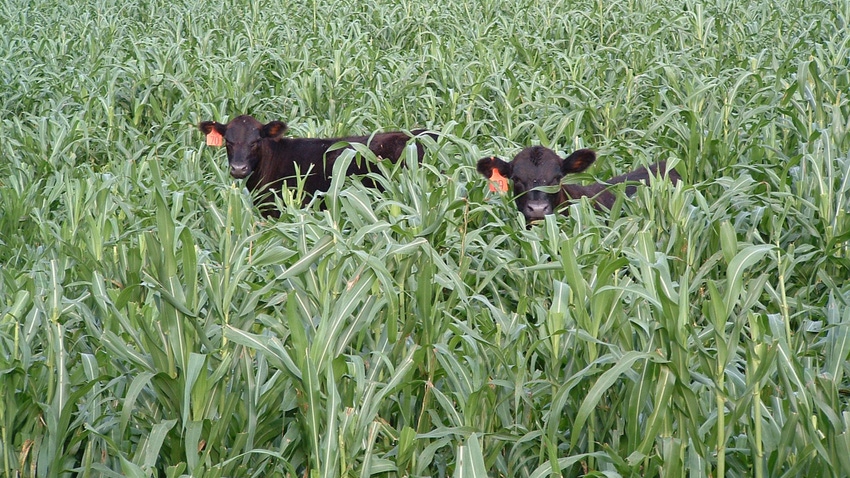January 25, 2024

By Katie Shockley
Cover crops and their potential benefits have created widespread interest among producers, yet little data exists to show if diverse cover crops could serve as a successful and profitable renovation tool for hayfields.
With this question in mind, University of Wyoming researchers Brian Mealor and Tyler Jones set out in search of an answer.
“The goal of our study was to take a deteriorated hayfield, terminate it with tillage or chemicals, plant a year or two of cover crops, and see if we observed any of the benefits cover crops are commonly reported to provide,” says Jones, assistant manager for research, outreach, and production at the Sheridan Research and Extension Center.
Hayfields were planted with a 14-species cover crop mix in accordance with recommendations from the Natural Resources Conservation Services’ Environmental Quality Incentives Program (EQIP). One of the benefits of EQIP is that it provides producers with cost-share incentives to help pay for the implementation of cover cropping, Jones explains.
“One of the challenges with cover crops is that they are not managed to obtain income, because unlike other cash crops, there is really no end product,” he says. “While it is hard to justify the expense of cover cropping, we found that positive returns can be had if cost sharing is available and cover crops are utilized as a forage resource for livestock.”
Environmental benefits
Mealor and Jones examined the soil and environmental benefits of cover cropping, including building organic matter and improving soil nutrient retention and water infiltration. Using these metrics, they compared cover cropping systems to typical hayfield management in the region, which typically involves terminating alfalfa, planting a year of small grains, and then going back to alfalfa.
“Cover crops in our study in both dryland and irrigated systems were able to produce a substantial amount of high-quality forage,” says Jones. “That’s great for someone who is approaching cover crops from the perspective of wanting to graze them.”
Cover crops did not provide noticeable soil and nutrient benefits in the short-term; however, soil water infiltration did improve when no-till soil practices were used instead of conventional tillage.
“In both environments cover crops suppressed weeds and provided adequate ground cover even after they were grazed,” Jones reports. “From the perspective of arming the soil and reducing erosion potential our data suggests that cover crops achieved their purpose.”
Approaching diverse crop mixes as alternative forages rather than cover crops may provide greater value in hay production systems where rotational windows are short and profitability is key, the researchers concluded.
[Katie Shockley writes for the UW College of Agriculture, Life Sciences and Natural Resources.]
Source: University of Wyoming
You May Also Like




